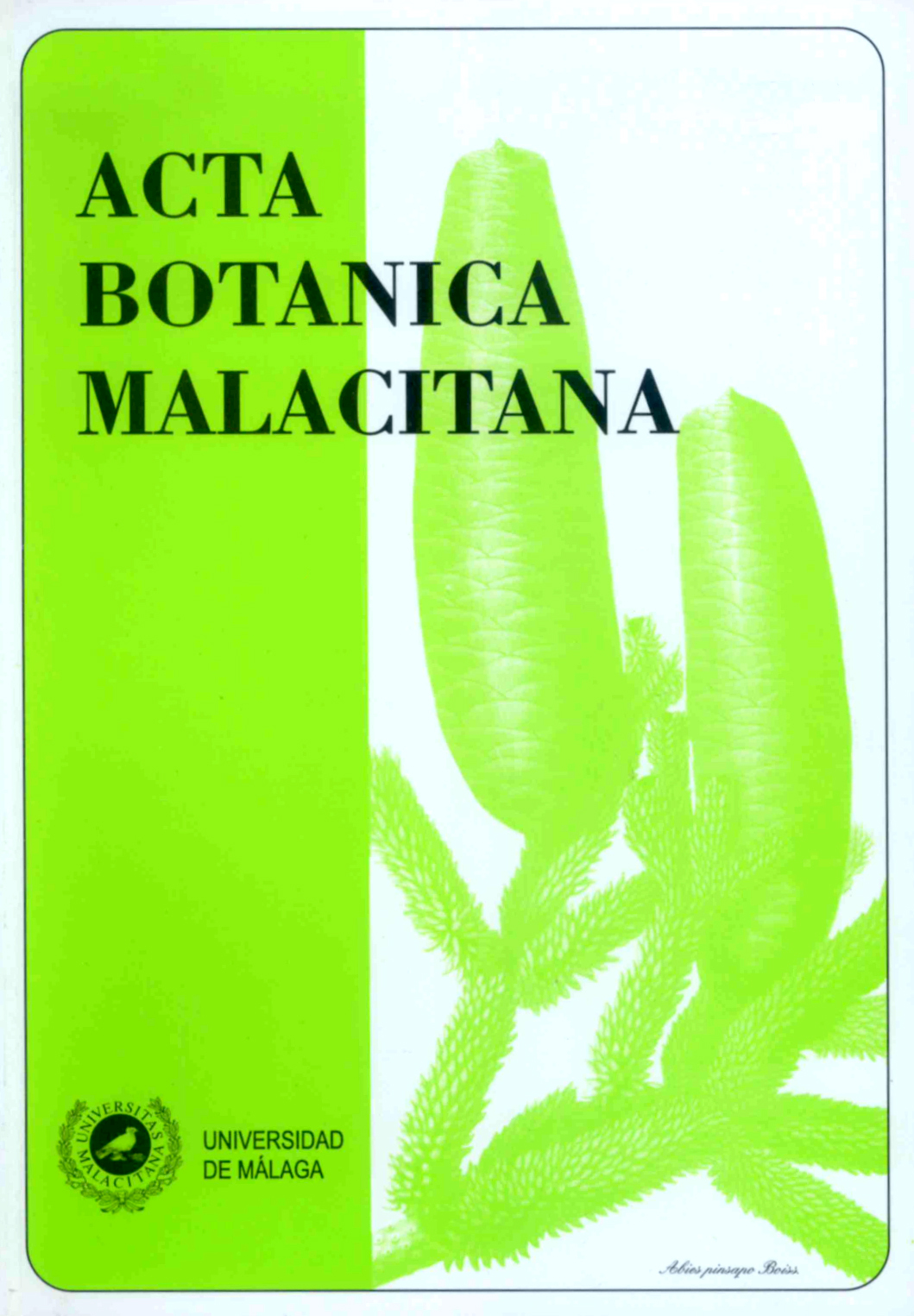Phenotypic evolution in microalgae: a dramatic morphological shift in Dictyosphaerium chlorelloides (Chlorophyta) after exposure to TNT.
DOI:
https://doi.org/10.24310/abm.v31i31.7126Abstract
RESUMEN. Evolucion fenotípica en microalgas: un cambio morfológico espectacular en Dictyosphaerium chlorelloides (Chlorophyta) tras la exposición a TNT. Un cambio morfológico muy rápido tiene lugar en Dictyosphaerium chlorelloides (Chlorophyta) tras la exposición de cepas salvajes al potente alguicida 2,4,6 trinitrotolueno (TNT). Las cepas salvajes, sensibles al TNT, tienen una morfología típica esférico-elipsoidal. Tras exponer dichas cepas a dosis letales de TNT, solamente sobreviven células resistentes al tóxico cuya silueta es fusiforme. Estos resistentes fusiformes aparecen como consecuencia de mutaciones espontáneas que tienen lugar antes de exponer las cepas salvajes al agente selectivo (TNT): es decir, las células fusiformes estaban presentes en la población salvaje. La frecuencia de mutantes fusiformes en las poblaciones salvajes está definida por el equilibrio entre la tasa de acumulación de mutantes y la tasa en que son eliminados por tener una eficiencia biológica menor (10-102 mutantes fusiformes por 106 células salvajes). Se propone que la selección de clones podría ser un mecanismo de evolución adaptativa en poblaciones de microalgas asexuales. Este evento opera mediante la selección de genotipos pre-selectivos que aparecen como consecuencia del incremento de la presión de selección como fruto de eventos catastróficos en el medio ambiente.
Palabras clave. Dictyosphaerium, evolución, microalgas, morfología, mutación, TNT.
ABSTRACT. Phenotypic evolution in microalgae: a dramatic morphological shift in Dictyosphaerium chlorelloides (Chlorophyta) after exposure to TNT. The occurrence of rapid morphological evolution in the microalga Dictyosphaerium chlorelloides (Chlorophyta) was induced after exposure of the wild strains of the alga to the potent algal poison 2,4,6-trinitrotoluene (TNT). After exposing a wild- type population (consisted of representative spherical-ellipsoidal cells) to doses of TNT that were lethal for most of the cells, a TNT-resistant spindle-shaped mutant was able to proliferate. This spindle- shaped mutant appeared spontaneously by rare mutations before the selective treatment: in deed, it was already present in the wild population. The frequency of the mutants within the ancestral population seemed to be determined by the balance between the rate of accumulation by recurrent mutation and the rate of elimination by selection (ranging 10-102 spindle-shaped mutants per 106 cells). We hypothesize that clone selection could take place in asexual populations of microalgae by selection of rare, pre-selective genotypes, driven by a drastic selective pressure subsequent to a catastrophic environmental change.
Key words. Dictyosphaerium, evolution, microalgae, morphology, mutation, TNT.
Downloads
Metrics
Downloads
Published
How to Cite
Issue
Section
License
All information related to the licensing of published works in Acta Botanica Malacitana and copyright can be found in our Editorial Policy.







1.png)
